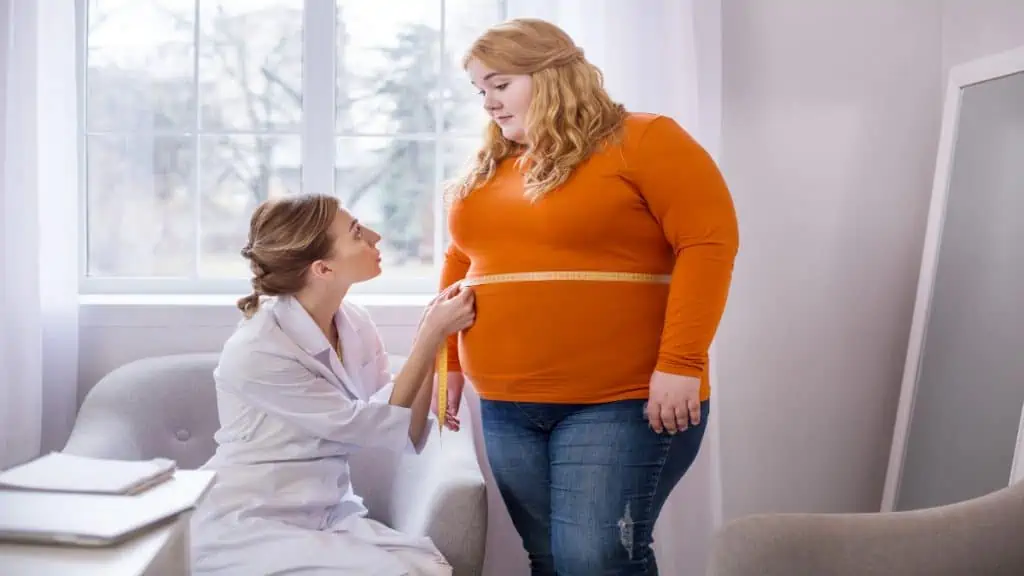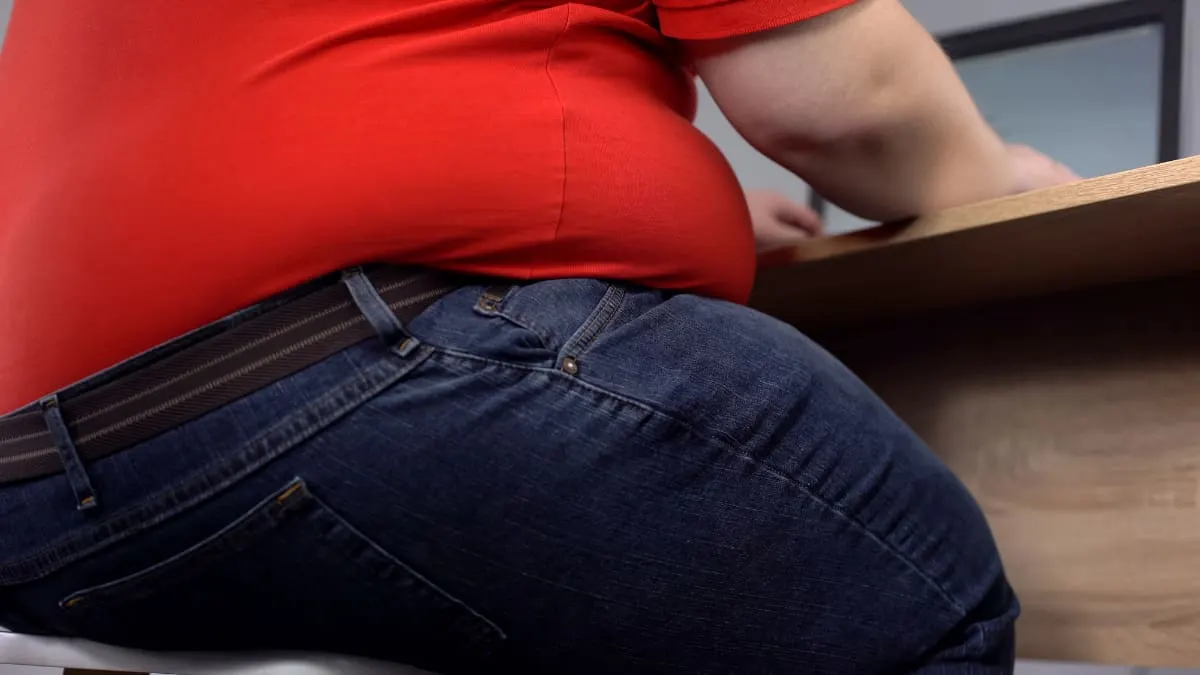While a 67 inch waist is much larger than the average UK waist size and that of the US, it’s never too late to slim your 67″ waist and dramatically improve your health.
To give you a rounded perspective on abdominal obesity, this article highlights some of the dangers of having a 67 in waist and then provides you with practical strategies for reducing your waistline.
Compare Other Waist Sizes:
What are the dangers of having a 67 inch waist?

While you shouldn’t feel pressured to be skinny or ripped, there are obviously some very serious physical health dangers that come with having a 67 inch waist.
If you have a 67 inch waistline, then it’s likely that you have excessive amounts of visceral fat. This kind of fat is very dangerous because it accumulates around your internal organs, such as your liver, which can actually lead to organ damage. [1]
Although this kind of intra-abdominal fat is extremely dangerous, the belly fat that you can pinch with your hands can also increase your risk of metabolic disease when it’s present in large quantities. [2]
Another danger of having an excessively big waist that nobody talks about is the damage that abdominal obesity can do to your mental health. Many obese individuals report feeling anxious and depressed about their weight, which can drain them of the motivation that they need to make a change.
Of course, everyone has parts of their body that they’re self-conscious about. Many bodybuilders, for example—despite being ripped and muscular—have body dysmorphia because they never feel that they’re big enough. So don’t feel that you’re alone if you’re insecure about your weight or stomach size.
What does it take to reduce the size of your 67 inch waist?

Reducing the size of your 67 inch waist requires that you have a sensible approach to training and diet. While many obese individuals push themselves to the limit in the gym in a bid to lose as much weight as possible, such fat-loss strategies are typically unsustainable over the medium and long term.
Instead, you should reduce your calories so that you’re losing a couple of pounds per week. So let’s say that you need 3000 calories to maintain your weight. In this case, you’d simply lower your daily calorie intake by 500. So now you’re eating 2500 calories instead of 3000.
Also, if you’re eating more nutritious foods, you’ll naturally feel fuller and more energetic, which will make you less likely to crave junk food. But if the cravings just become too intense for you to resist, it’s a smart idea to eat your fill of fresh fruit.
That’s why I always recommended that dieters keep easily accessible fruits in their home at all times—it’s much better to gorge on grapes and apples than it is to devour cakes and cookies.
Cooking from scratch (which I appreciate is not always easy) is an excellent way to control the calorie, macronutrient, and micronutrient content of your meals. There are loads of delicious recipes on the internet that you can use for inspiration, and you can always batch cook to save time. [3]
The verdict: How large is a 67″ waist?

I won’t sugar coat it; a 67 inch waist is extremely large and is likely putting your long-term health at great risk. The good news, of course, is that when your bodyweight is so high, you can typically lose weight pretty fast at first, which can be really motivating if you’ve never dropped fat before.
But even if you don’t experience rapid weight loss within the first few weeks, that’s ok. Losing weight consistently is what matters the most because small incremental changes will eventually stack up and result in a whole new physique over the course of the months.
And remember to start small—if you don’t feel like committing yourself to the gym, then go for a daily walk or buy a pair of dumbbells to work out with. The best exercise routine is the one that you can stick to, so don’t be afraid to try different workouts to see which training modalities you enjoy the most.
References
- Ruhl, C. E., & Everhart, J. E. (2010). Trunk Fat Is Associated With Increased Serum Levels of Alanine Aminotransferase in the United States. Gastroenterology, 138(4), 1346–1356.e3. https://doi.org/10.1053/j.gastro.2009.12.053
- Kang, S. M., Yoon, J. W., Ahn, H. Y., Kim, S. Y., Lee, K. H., Shin, H., Choi, S. H., Park, K. S., Jang, H. C., & Lim, S. (2011). Android Fat Depot Is More Closely Associated with Metabolic Syndrome than Abdominal Visceral Fat in Elderly People. PLoS ONE, 6(11), e27694. https://doi.org/10.1371/journal.pone.0027694
- MacAvoy, S. (2022, January 8). 50 Low-Calorie Meals That Don’t Taste Like Diet Food. Good Housekeeping. https://www.goodhousekeeping.com/food-recipes/healthy/g4259/low-calorie-meals/

